November 12, 2019
How can you calculate the required amount of humidification for your factory?

How can you calculate the required amount of humidification for your factory?
The amount of humidifiers needed in a factory is affected by factors such as temperature, ventilation rate and desired humidity level.
Air change rate
The air change rate is the number of times per hour that the whole air of the room is changed by the ventilation system.
Initial relative humidity
Your current humidity level can be measured by the use of a hygrometer. This is an affordable small device which costs around 10 euros.
Target relative humidity level
The ideal humidity level generally lies between 40-60% depending on the industry you are operating in. Below you can see what the recommended level is for different industries.
Recommended humidity levels per industry:
Automotive: 50-60%
Bakery: 40-60%
Chicken hatch: 60-70%
Electronics: 30-70%
SMT: 30-50%
Greenhouse: 40-70%
Mushroom cultivation: 80-90%
Printing: 40-60%
Textile: 40-60%
Wine cellar: 50-60%
Examples of amount of humidifiers needed in different factories
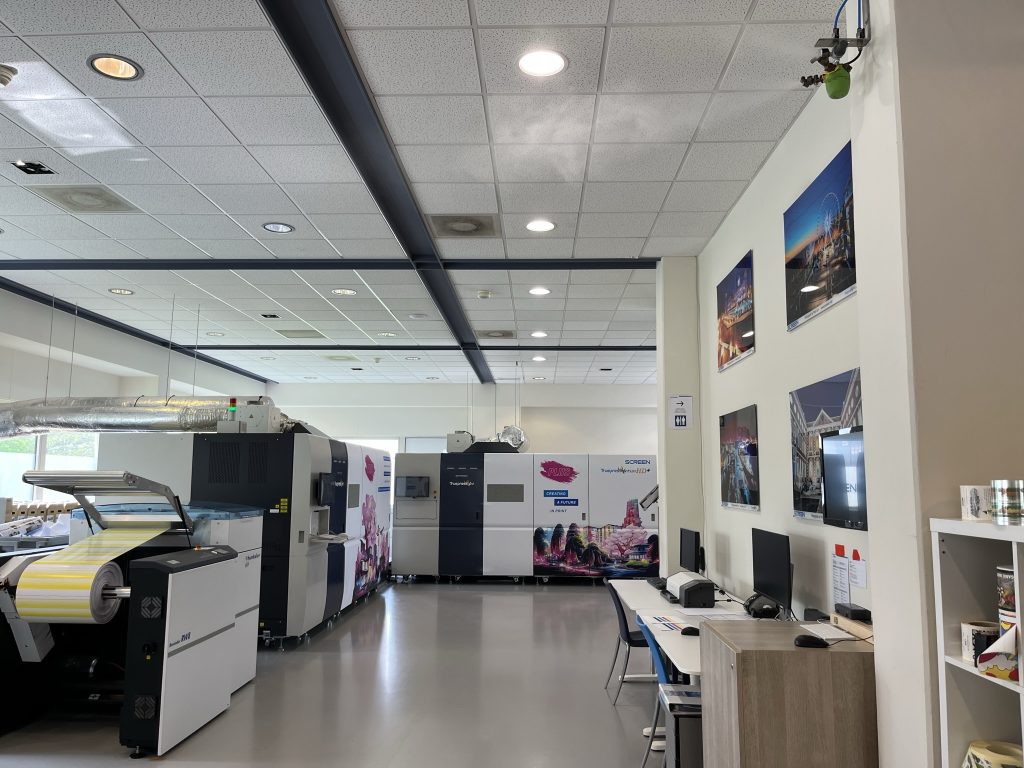
A printing company installed 3 units of humidifiers in their showroom.
Read the case study here
An electronics company installed 8 units of humidifiers in their production.
Read the case study here
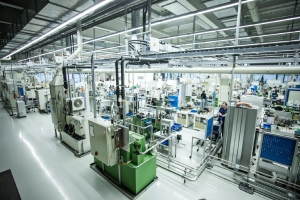
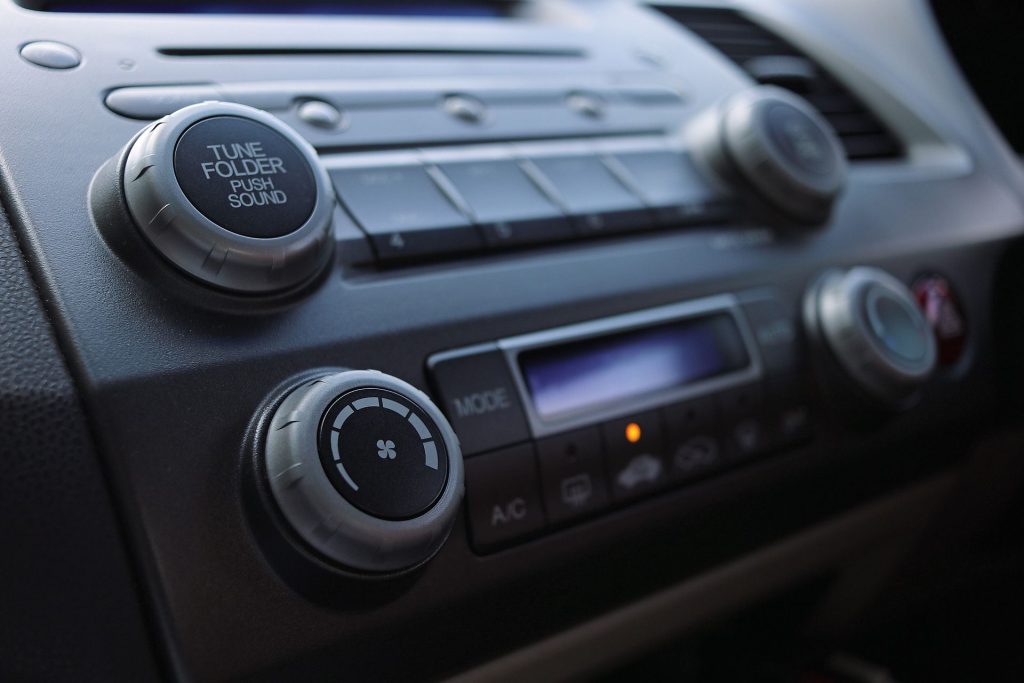
A car audio manufacturer installed 46 units of humidifiers in their SMT lines and inspection lines.
Read the case study here
A growth company in plants and crops installed 60 units of humidifiers in their greenhouses. The floor areal was 6.038 m².
Read the whole case study here
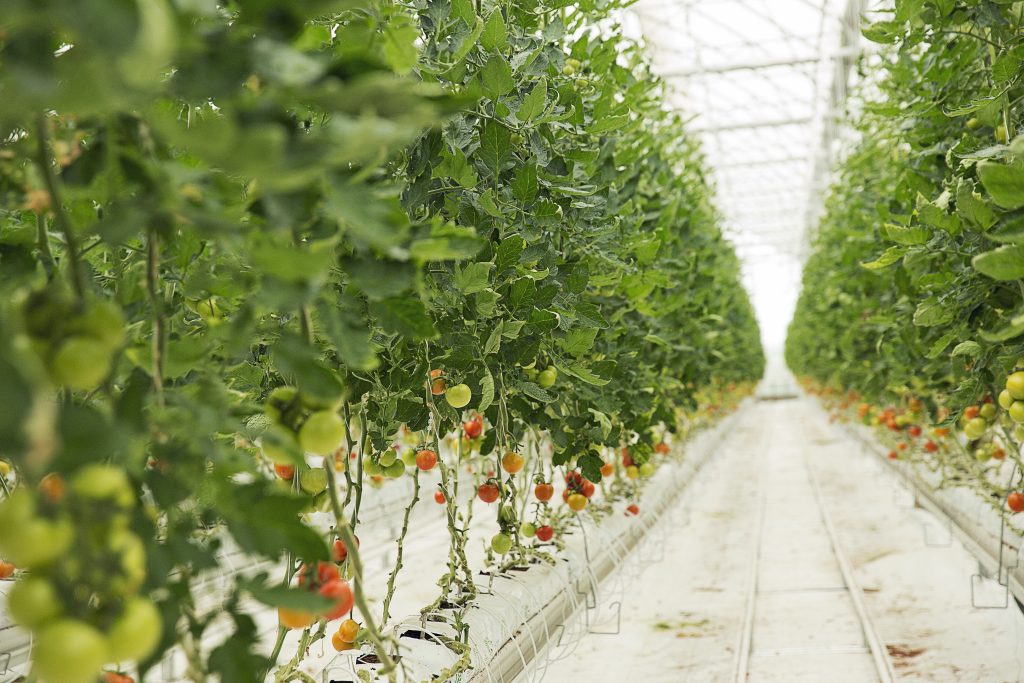
How to calculate the humidification load manually?
You have 2 tools at your disposal that can help you to determine the right quantity of humidity you need to add in a room: the psychrometric chart and a mathematics formula.
You will need to use both of these tools to determine with precision the humidity load that needs to be added to your room to obtain the right humidity level.
- With the psychrometric chart, you know how much quantity of humidity you need to add in order to reach the desired relative humidity level.
- With the formula, you can calculate the exact humidity load needed depending on the characteristics of your room.
How to optimize these tools to find the correct humidification ?
First, let’s look at the psychrometric chart that you can use to determine the required amount of humidification.
This diagram shows the characteristics of “humid air” related to relative and absolute humidity. It helps to understand parameters like dry-bulb temperature (DBT), dew point temperature, absolute humidity, relative humidity, and enthalpy (the total amount of energy in a system).
If you know two of those elements, you can find all the remaining ones using the psychrometric chart.
The psychrometric chart
The psychrometric chart shows how the metrics evolve depending on your parameters.
It shows the dry-bulb temperature (DBT), the absolute humidity, the relative humidity, and the enthalpy at a standard pressure: 101325 Pa. You can figure out any figure of the chart if you know 2 of these parameters.
For example, if you know the current relative humidity and the actual temperature in the room, you can just cross-check both of these values on the graph and find out the absolute humidity of the room.
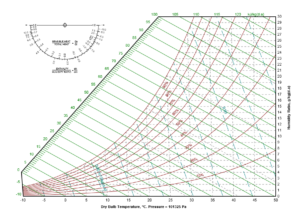
The mathematics formula to calculate the humidification load
The second tool is the formula to calculate how much humidity you should bring to your room:
![]()
- L represents the humidification load (amount of humidity or water) that you should add to the airflow every hour. It is expressed in kg/hour.
- V is the ventilation rate and it represents the number of times that the whole air of the room is changed. It can be expressed in m³/hour and can be calculated by multiplying the volume of the room by the change of air per hour (CAH).
- R represents the air density. It is 1.2 when the temperature is 20 degrees. It is expressed in kg/m³.
- (x1 – x2) represents the difference between the desired humidity levels and the humidity levels of the air we bring in, expressed in kg of water per kg of air: kg/kg. This is the absolute humidity per kilogram of air, also called the humidity ratio on the psychometric graph.
Practical example
Both the formula and the psychrometric chart can help you find out how you can reach the desired humidity level. Let’s take a concrete example with figures on how you can use both tools accordingly.
How to use the psychrometric chart?
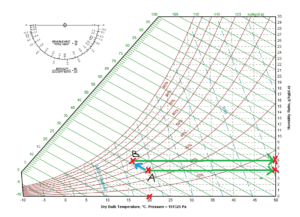
Let’s assume that a room has a temperature of 20 degrees, and a relative humidity of 30%.
- First, you need to find out the amount of water in the air. You can find out by crossing the dry-bulb temperature (DBT) and the relative humidity values on the graph. Mark the crossing point(A). Then you have to report them to the y-axis to find the humidity ratio. The result for 20°C and 30%RH is approximately 4.5 grams of water per kilogram of air.
- Secondly, you must find the amount of water that is needed in the air to reach the humidification needed for your industry.
Let’s say that you want to reach 50%RH. Find the previous crossed point. Then follow the green enthalpy line upward to the 50%RH. Report the second crossing point(B) to the y-axis. In this case, the value is 6 grams of water per kilogram of air.
Remark: you can also notice that the dry-bulb temperature decreased to approximately 16.5 °C.
Now, you know that you have to add 6 – 4.5 = 1.5 grams of water per kilogram of air.
How to calculate the exact amount of humidification needed with the formula?
L = V x R x ( X1 – X2)
We already know that the air density R is 1.2 when the temperature is 20 degrees, and the humidity ratio (X1 – X2) needed to add is 1.5 grams.
Reminder: (X1 – X2) is expressed in kg/kg
L = V x 1.2 x 0.0015
All you have left to do is to calculate the ventilation rate V by multiplying the volume of your room by the change of air per hour.
Moreover, here is an indication of the air change per hour depending on your room’s construction.

If the dimensions of your rooms are 15m x 25m x 2.5m = 937.5m³ and your room has a unit of 1 change of air per hour, then the humidification load will be :
L = 937.5 x 1.2 x 0.0015 = 1.6875 kg/hour
Therefore, in order to reach a relative humidity level of 50% for your room of 937.5m³, you will need a humidifier with a humidifying capacity of 1.7 kg/hour or 1.7 l/hour minimum.
Knowing the exact amount of humidity you need to add for your application and desired humidity level will help you narrow down which humidifier you require.
If you want to use the psychrometric chart you can download it following this link.
If you still have doubts, our engineers can support you with a site survey and determine the best approach for your factory. Book a site visit here
